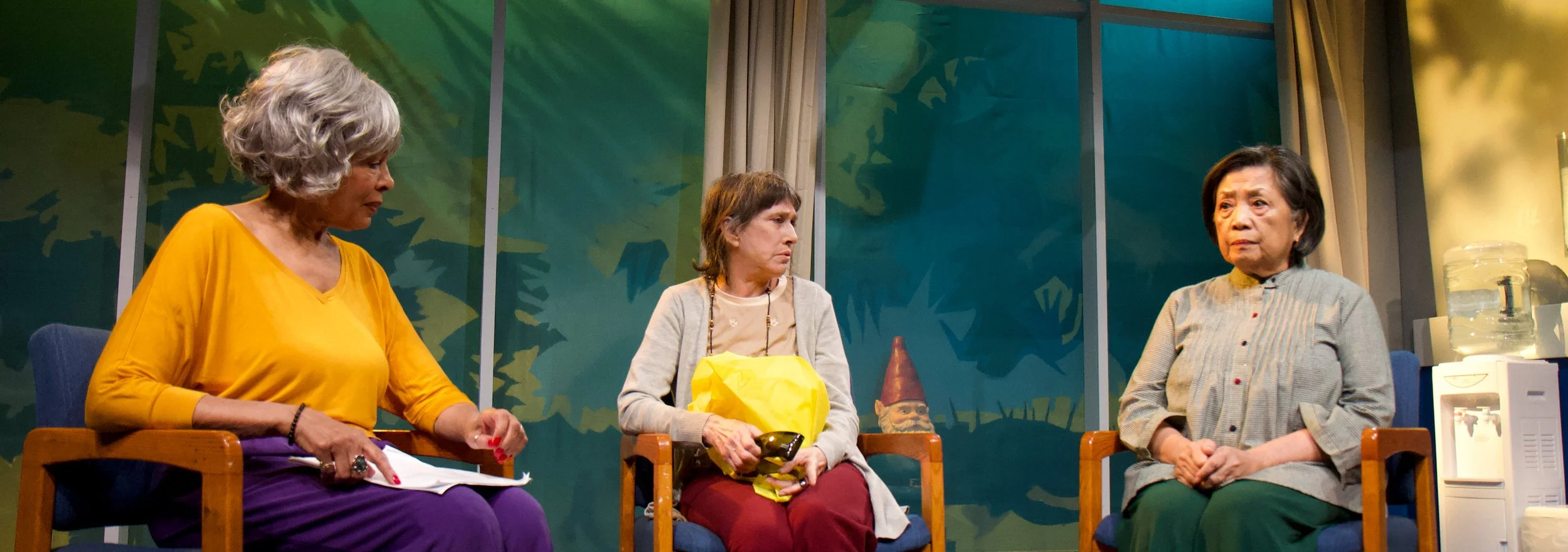"We are not fighting so that you will offer us something," says a gun-wielding terrorist to a trembling husband-and-wife catering team. "We are fighting to eliminate you." If this line sounds scary in a fictional context, you may not want to know that it is a direct quote from Hussein Masawi, the former leader of Hezbollah. In the pulse-pounding play The Caterers, playing at the 29th Street Repertory, fact and fiction are blended together as writer Jonathan Leaf reimagines the events in a 1977 hostage situation where Islamic terrorists stormed buildings in protest of a film called Mohammed, Messenger of God.
The Caterers opens in a tiny lobby two hours before this controversial movie is to premiere. Caterers David Weintraub (Ian Blackman) and his wife, Nina (Judith Hawking), bask in the preopening excitement, discussing their own dreams of screenwriting stardom while arranging bottles of wine and water on a linen-white table.
Suddenly, a bearded man in blue overalls barrels through the door wielding a gun. He immediately informs the Weintraubs that he is a terrorist, they are his hostages, and they can call him Mohammed. Moments later, the film's British writer, Warren Heath (Peter Reznikoff), enters, ecstatic to be at his premiere. By this point, the tension in the room is suffocating.
Warren is a self-centered man whose true nature is revealed when he takes a drastic measure to save his own life while putting someone else's at risk. David and Nina are a resourceful couple who attempt to talk their way out of the situation, even complimenting Mohammed by noting that he does not seem like a typical terrorist. Smirking, he replies, "You encounter us regularly?"
Mohammed is played frighteningly well by Brian Wallace, and the audience finds itself pulled into this claustrophobic lobby where you start to see every prop as a potential weapon. This is the type of story where you desperately look for a loophole, some small point of implausibility to assure you that this could not really happen. But Leaf has covered every base. There is no way to escape the room or to reason with a hateful, violent man who is willing to kill everyone in it.
The Caterers forces its audience to confront an issue they spend every day trying to avoid. Terrorists are the bogeymen in the closet, threatening to strike when we are rushing to a subway, starting a day of work, or even walking down the street. Moments before Nina and David were held at gunpoint, they were watering lobby plants. Before Warren was Mohammed's tortured captive, he was a wealthy, honored writer eagerly anticipating the opening of his film. Their situation is disturbing on many levels, the most being our deepest fear: that this can happen to anyone at any moment.
It is also important to note that Leaf does not take sides or preach politics in the play. World issues are occasionally discussed, but there is no Bush-bashing, no criticism or praise of the Iraq war, no attack on conservatives, and no praise for liberals. The core issue is Mohammed, Messenger of God, which the terrorists do not want people to see because they think the film will disgrace Mohammed, the prophet of Islam.
Whether it truly does, the terrorists will never know because they refuse to watch it. This is the issue Leaf stresses the most: the "conclusions people come to without looking at the evidence." People will lose their lives over the premiere of an unseen film, based entirely on paranoid speculation.
This tightly plotted play moves at a fast pace with no intermission to break up the suspense or spoil the illusion that you are trapped in the room. Because of this, the anxiety level can get quite high, and several audience members were crying or covering their mouths in horror. When the play ends, it is hard to shake the feeling that you have just spent the past 80 minutes locked in a room with a terrorist.






